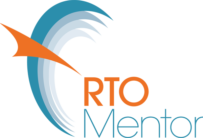There are a number of steps we need to think about when reviewing our assessment tools. The tools you are reviewing can be purchased from a commercial provider, or developed by your internal gurus within the RTO. To assist you with the review of your tools I have developed a simple list of 9 points to assist you with creating your own success.
1. Do you have evidence that you are assessing for the whole unit?
For example have you a way of showing you are meeting the performance criteria, the critical aspects, or for the new units the Performance Evidence, Knowledge Evidence and Assessment Conditions.
This is often shown in a mapping document. They don’t have to be mapped, yet the standards require you to demonstrate that it covers the all the areas of the unit. The easiest way to do this is through the mapping. Do it to show yourself they are quality tools, not for the auditor.
2. Have the specified sections of tasks been mapped?
The mapping shows which part of activity 1 covers the specific performance criteria or evidence. E.g. Activity 1.1 covers PC 1.4. When people use generalisation, it often allows for error in the mapping, and can lead to non-compliances.
3. Do the tools contain the instructions on the tasks to be administered to the student and the context and conditions for the assessment?
This helps to provide clarity and create a reliable tool. Instructions for the assessor and student. Do they describe under what conditions the assessment can be carried out; onsite, offsite, how long, what happens if you don’t see all the things in that period of time, what resources are required, what support is allowable. Having instructions means the tools are reliable and fair.
4. Are you collecting evidence against tasks?
Observation of tasks, whether in a workplace or simulated environment is showing the student can perform to the unit standards. An observation checklist enables the assessor to observe in a focused way, and to take structured notes that can be referred to when making the assessment decision. Assessors need to know exactly what they are looking for, what resources are needed, and any other issues that need to be taken into account.
5. Are you over or under assessing?
The validity of the assessment methods and materials reflect the whole unit. Are all the things I am putting into this tool, actually part of the unit? To mark someone against a criteria that is actually not in the unit is outside the validity.
6. Is it assessed at the correct AQF level.
AQF is now part of the legislated requirement. For assessment tools, pitch them at the correct AQF level. A very common noncompliance is that tools are pitched at the wrong level.
7. Have you validated with industry?
Can you show that you have made use of actual workplace language, or show understanding of the industry to ensure the tool/s make sense. Simply run the assessment past someone within industry and ask them if it is appropriate to them. Ask your contact what is happening in the industry, talk to people, find out how processes work and make sure the tasks you are asking to be done can be done.
8. Are the observation tools collecting observable behaviours?
Do the tools provide evidence criteria used to judge the quality of performance, for instance, the decision‑making rules, on what competency looks like?
So often I see a cut and paste from elements and performance criteria. AND so often these are not observable behaviours. Each item must be DIRECTLY observable. You need to see the person do it. Also each time needs to be focused on one behaviour; you can’t have two activities attached to each item. Getting this right shows validity, sufficiency, authenticity.
9. Do your tools have clear marking guides?
Benchmarking criteria is used in quality tools for all assessors to know what are the expected responses. Yes I know assessors come from within industry, however so often there are grey areas. Considerations include; what constitutes a satisfactory response, if production is required, then what are the specific requirements, or what happens if someone only performs 7 out of the required 12 items in the observation checklist. Can the observation be done in isolation or could the requirement also be covered by answering a question? Good assessment tools have this detail in the marking guides. This provides reliability and fairness.
Enjoy!
Remember, If you are unsure, we can help. Contact us today to find out more.
